Best Camping Stoves of 2024
- October 2, 2023
- 0 comment
For a decade, we’ve meticulously selected and tested 33 top camping stoves. This year, we’ve narrowed it down to the best 9 after extensive outdoor trials. From rapid boil tests to wind-resistance checks, and from simple one-pot dishes to elaborate meals, we’ve put each stove to the test. Our aim? To assess their efficiency, usability, and overall performance. Based on factors like setup ease, cleaning convenience, and portability, we’ve ranked them to guide you to the perfect stove for your camping culinary adventures.
9 Best Camping Stoves of 2024
- Jetboil Flash Cooking System
- Camp Chef Everest 2X
- MSR WindBurner
- Camp Chef Everest 2-Burner Stove
- Primus Omnilite Ti
- BioLite CampStove 2
- Snow Peak GigaPower Stove 2.0
- Coleman Classic Propane Stove
- Camp Chef Explorer
Let’s dive into our Top 9 Best Camping Stoves
1. Jetboil Flash Cooking System: Best Quick-Boil Camping Stove
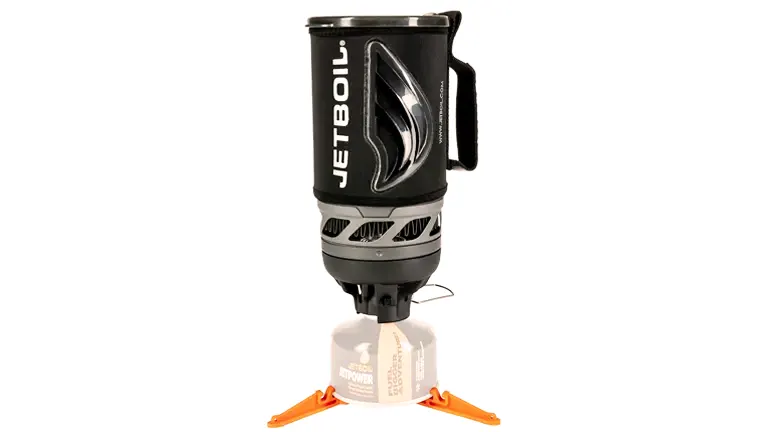
Quick Specifications:
The Jetboil Flash Cooking System instantly became a favorite during my solo backpacking escapades. Its promise of super-fast boiling times lived up to the hype. In just 100 seconds, it boils water, making my coffee breaks and meal prep a breeze, even on chilly trails.
- Number of burners: 1
- BTU output: Not typically specified due to integrated system design
- Boil time: Approx. 100 seconds for 0.5 liters
- Fuel type: Isobutane-propane
- Weight: Around 13.1 oz (371g) without fuel
Its 1-liter FluxRing cooking cup, paired with an insulating cozy, ensures rapid boiling and retains warmth. The pushbutton igniter is a convenience I didn’t know I needed until I used the Flash—no more searching for matches. Plus, the color-change heat indicator removes any guesswork about water readiness.
Beyond its efficiency, the Flash impresses with its versatility. From a morning coffee press to a hanging kit for challenging terrains and additional cookware like the FluxRing pot, it meets all my outdoor cooking needs. It even packs a dual-purpose bottom cup that acts as both a measuring cup and bowl.
All these features come in a lightweight 13.1-ounce package, making the Jetboil Flash an invaluable addition to my gear.
Pros
- Fast boiling time: The Jetboil Flash is designed for the rapid boiling of water.
- Compact and lightweight: Ideal for backpackers or solo travelers.
- Integrated system: Stove, pot, and fuel canister work seamlessly together.
- Heat color-change indicator: Let you know when the contents are hot.
Cons
- Limited use: Primarily designed for boiling water, so not as versatile for other cooking needs.
- Price: Tends to be more expensive compared to basic canister stoves.
2. Camp Chef Everest 2X: Best Overall Camping Stove
Quick Specifications:
- Number of burners: 2
- BTU output: 40,000 BTUs (combined)
- Boil time: Varies based on conditions and pot size
- Fuel type: Propane
- Weight: Not specified, but portable for tabletop use
On my quest for the ultimate camping companion, the Camp Chef Everest 2X stood out. With its dual 20,000 BTU burners, I have a powerful total of 40,000 BTUs, ensuring quick and even cooking. The stove’s matchless ignition means I can ignite it effortlessly with a twist, wherever my adventures take me. Despite its robust capabilities, the Everest 2X remains portable, featuring a compact design with a protective folding lid that doubles as a windscreen. Its spacious 215 sq. inches of cooking area means I’ve ample space to whip up any meal. Crafted by Camp Chef, known for their commitment to quality, this stove has proven to be both reliable and essential for my outdoor escapades.
Pros
- Powerful burners: Two high BTU burners ensure quick and even heating.
- Adjustable heat controls: Offers more precise cooking.
- Compact: Despite its power, it folds up relatively small.
Cons
- Weight: Heavier than many backpacking options.
- Fuel efficiency: Not the most fuel-efficient stove.
3. MSR WindBurner: Best Wind-Resistant Stove for Solo Campers
Quick Specifications:
- Number of burners: 1
- BTU output: Not typically specified due to integrated system design
- Boil time: 4.5 minutes for 1 liter
- Fuel type: Isobutane-propane
- Weight: Varies, 15.5 oz (439g) for solo stove
Discovering the MSR WindBurner truly enhanced my solo adventures. With its award-winning Reactor® technology, it’s optimized for individual travelers. The stove’s radiant burner and windproof design are standout features. Even in blustery conditions, it boils water quickly, outperforming many conventional stoves.
Its integrated cookware, with a built-in heat exchanger, ensures efficient heat transfer to the lock-on pot. This makes for quick meals and drinks, especially appreciated after an intense day outdoors.
The design’s brilliance lies in its compactness. Everything fits neatly within the 1.0 L pot, including an extra bowl that snaps outside. It’s not just about space-saving; it’s about the ease of use. The pot securely locks onto the stove, and the system even offers room to nest an optional MSR® IsoPro™ fuel canister.
Versatility is another bonus. The WindBurner is compatible with various pots, though it’s specific about not pairing with the WindBurner Stock Pot or Sauce Pot.
In all, the MSR WindBurner stands out as an efficient, compact, and versatile stove system, becoming an indispensable part of my camping gear.
Pros
- Wind resistance: Performs well even in windy conditions.
- Integrated system: The Pot connects directly to the stove.
- Efficiency: Good fuel efficiency.
Cons
- Cooking versatility: Primarily designed for boiling water.
- Price: On the higher end for backpacking stoves.
4. Camp Chef Everest 2-Burner Stove: Best Dual-Burner Portable Stove
Quick Specifications:
- Number of burners: 2
- BTU output: 40,000 BTUs (combined)
- Boil time: Varies based on conditions and pot size
- Fuel type: Propane
- Weight: Not specified, but portable for tabletop use
When I stumbled upon the Camp Chef Everest 2-Burner Stove, its compact size initially had me skeptical. However, my reservations vanished as I delved deeper into its capabilities. This stove isn’t just about size—it’s a powerhouse. With two high-pressure 20,000 BTU burners, it produces all the heat needed to handle a variety of cooking tasks. Whether I’m out with friends or with my family, Everest ensures everyone gets a hot meal.
Starting it up is a breeze. Its matchless ignition system, specifically the Piezo igniter, sparks the stove to life with a simple button push. Gone are the days of struggling with wet matches or the risk of singed fingertips. And the flexibility it offers is truly impressive. With separate burner controls, I can simultaneously boil noodles on one burner while gently warming sauce on the other.
The stove’s nickel-coated steel cooking grate has proven to be both sturdy and reliable, confidently accommodating my pots, griddles, and skillets. But one feature I’ve particularly come to appreciate is its new Dual Locking lid and handle. It might seem simple, but this feature ensures hassle-free transportation, making it even more suited for on-the-go adventures.
Despite all these features, it remains lightweight and incredibly compact. Whether I’m headed to a remote campsite or a weekend picnic, Camp Chef Everest has cemented its place as an essential piece in my outdoor equipment collection.
Pros
- Powerful burners: Suitable for a variety of cooking needs.
- Easy ignition: Push-button ignition system.
- Sturdy build: Reliable for car camping and more rugged uses.
Cons
- Bulkier size: Not suitable for backpacking.
- Fuel efficiency: Uses propane relatively quickly.
5. Primus Omnilite Ti: Most Versatile Multi-Fuel Stove
Quick Specifications :
- Number of burners: 1
- BTU output: Not always specified, but multi-fuel stoves typically have variable output
- Boil time: Varies based on conditions and pot size
- Fuel type: Multiple including gasoline, diesel, kerosene
- Weight: About 12 oz (340g)
The first time I laid my eyes on the Primus OmniLite Ti, I knew I was in for a treat. Touted as Primus’s lightest multi-fuel stove, it carries the pedigree of the award-winning OmniFuel Stove. What immediately appealed to me was its promise to stand strong in the harshest environments while being a truly global traveler’s companion, adaptable to varied fuel sources.
When I paired it with the latest Primus PrimeTech pots, which come with integrated heat exchangers, its efficiency truly shone. The OmniLite Ti boasts an output of 8900 BTU (2600W), allowing me to boil a liter of water in under four minutes. The oversized control knob—a feature I’ve grown fond of—offers a nuanced control over the flame, transitioning seamlessly from a delicate simmer to a roaring blaze that can melt snow in a jiffy, perfect for those high-altitude treks.
But it’s not just the performance that impressed me. The stove’s versatility is a godsend. Whether I have gas, gasoline, diesel, kerosene, or even aviation fuel on hand, the OmniLite Ti is up for the task. This versatility makes it an invaluable tool, especially during my travels to remote locales where fuel availability can be unpredictable.
Its design is clearly meant for those like me, who prefer traveling light but won’t compromise on utility. Given its power, I was pleasantly surprised by how perfect it is for 1-2 people on the move. The package, complete with an ErgoPump, multi-tool with a cleaning needle, foldable windscreen, heat reflector, and a snug nylon bag, ensures I have everything I need without unnecessary bulk. And for those moments when I crave a peaceful mountainside meal, the OmniLite TI Silencer guarantees a quieter cooking experience, a touch I genuinely appreciate.
Pros
- Versatility: Can run on a variety of fuels.
- Lightweight: Made with titanium, making it suitable for backpacking.
- Stable: Wide pot supports.
Cons
- Price: One of the more expensive backpacking stoves.
- Learning curve: Adjusting for optimal flame can be tricky.
6. BioLite CampStove 2: Best Eco-Friendly Stove with Charging Capabilities
Quick Specifications :
- Number of burners: 1
- BTU output: Not typically specified due to unique design
- Boil time: Varies based on fuel quality and conditions
- Fuel type: Biomass (twigs, wood, etc.)
- Weight: About 2 lbs (935g)
The BioLite CampStove 2 has revolutionized my off-grid experiences. A creation of BioLite, a brand known for its mission to bring energy to the remotest of locations, this stove is a game-changer. It’s more than just a camping stove; while I cook or boil water, it charges my devices. Remarkably, I use twigs and sticks from around my campsite as fuel, no need for anything extra.
What sets the CampStove 2 apart? It has 50% more power than its predecessor and an integrated battery. The LED dashboard offers real-time updates on fire strength and battery level. Moreover, thanks to its design, it produces almost smokeless flames, providing both efficient cooking and cleaner air.
The real marvel, for me, lies in its technology. It converts the heat from the fire into electricity, which powers a fan for improved combustion and also provides a charging port for my devices. The built-in battery ensures I have power even after the flames die down.
Not to forget its design: lightweight, foldable legs for portability, and compatibility with various cookware. In essence, the BioLite CampStove 2 has become a staple in my camping gear, blending sustainability with cutting-edge technology.
Pros
- Green energy: Converts heat into electricity to charge devices.
- Fuel: Burns twigs, sticks, pinecones; no need to carry fuel canisters.
- Smoke reduction: Less smoky compared to a regular wood fire.
Cons
- Weight: Heavier compared to many backpacking stoves.
- Cooking consistency: Flame control is less precise.
7. Snow Peak GigaPower Stove 2.0: Best Lightweight Backpacking Stove
Quick Specifications :
- Number of burners: 1
- BTU output: Not always specified for compact stoves
- Boil time: Around 4.5 minutes for 1 liter
- Fuel type: Isobutane-propane
- Weight: Roughly 2.64 oz (75g)
The first time I used the Snow Peak GigaPower Stove 2.0 – Auto, I was struck by its perfect blend of aesthetics and rugged performance. As one of Snow Peak’s hallmark products, its reputation precedes it—and for good reason. This lightweight stove has since become my reliable companion whenever I venture outdoors.
Its design is truly elegant, but it doesn’t compromise on functionality. With four foldable arms, the stove offers unparalleled stability, ensuring my cooking vessels stay put even on uneven terrains. The impressive 10,000 BTUs it generates translates to swift boiling times, making meal preparations on the trail quicker and more efficient.
For those seeking the ultimate in ultralight backcountry gear, pairing the GigaPower Stove Auto with the Trek 700 is a match made in heaven. In all, the Snow Peak GigaPower Stove 2.0 has elevated my outdoor culinary experiences, striking a fine balance between style and substance.
Pros
- Compact: Extremely small and lightweight.
- Durable: Built with quality materials.
- Easy ignition: Comes with an auto igniter.
Cons
- Wind susceptibility: Can be affected by wind if not shielded.
- Limited pot stability: Small supports, so not ideal for larger cookware.
8. Coleman Classic Propane Stove: Most Reliable Classic Design Stove
Quick Specifications :
- Number of burners: 2
- BTU output: Up to 20,000 total BTUs (combined)
- Boil time: Varies based on conditions and pot size
- Fuel type: Propane
- Weight: Varies, but generally portable for camp use
When it comes to dependable camping gear, my Coleman Classic Propane Stove has never let me down. With its two burners delivering a combined 20,000 BTUs of grilling power, preparing meals at the campsite has become a breeze. I’ve been particularly impressed with the adjustable WindBlock™ panels. They not only shield the flames from gusty winds but can also be tailored to fit different pan sizes.
Speaking of pans, I’ve often found myself cooking with a 12-inch pan on one burner and a 10-inch on the other, making multitasking in the great outdoors incredibly convenient. The PerfectFlow™ pressure regulator has been a game-changer. Regardless of the conditions—be it a sudden storm or altitude changes—the performance remains consistent and reliable.
Fuel efficiency is another bonus. On a single 16.4 oz. propane cylinder (which, by the way, is sold separately), I can keep both burners roaring on high for up to an hour. And to top it off, Coleman backs this stove with a reassuring 3-year limited warranty.
In essence, the Coleman Classic Propane Stove has become an indispensable ally on my camping adventures, offering a perfect blend of power, versatility, and reliability.
Pros
- Reliability: A classic choice with a long-standing reputation.
- Two burners: Allows for cooking multiple dishes.
- Price: Generally affordable.
Cons
- Weight: Not for backpacking.
- Bulkier size: Takes up more space.
9. Camp Chef Explorer: Best Rugged Outdoor Cooking System
Quick Specifications :
- Number of burners: 2
- BTU output: 60,000 total BTUs (combined)
- Boil time: Varies based on conditions and pot size
- Fuel type: Propane
- Weight: Heavier, designed for more stationary camp use
One of my most trusted companions on my outdoor adventures is the Camp Chef Explorer. This rugged two-burner stove has been at the heart of countless memorable meals, from morning bacon and eggs to evening Dutch oven feasts. Its adaptability is what stands out the most; I can switch between grilling salmon and baking pizza, thanks to the range of Camp Chef accessories it’s compatible with.
What makes the Explorer particularly special to me is its dual role as both a versatile outdoor stove and a reliable solution during emergencies. With its 15-hour cooking time on a single 20 lb propane tank (which you’ll need to provide), I’ve had peace of mind during power outages and unforeseen situations. The robust performance of the Explorer is further complemented by its 3-sided Windscreen, ensuring I can cook efficiently even in breezy conditions. With just one propane tank, I can keep this outdoor marvel running for a commendable 15 hours.
One of the aspects I appreciate about Camp Chef is the attention to detail. There are troubleshooting tips right there for me, ensuring a smooth cooking experience. Whether it’s adjusting for the perfect blue flame or ensuring the propane flow is optimal, guidance is at hand.
At the heart of it all, Camp Chef understands the universal truth: great food brings people together. Whether I’m soaking in nature’s beauty or gearing up for a tailgate party, the Explorer ensures I never compromise on taste.
Why choose the Camp Chef Explorer? Well, apart from its two powerful 30,000 BTU burners, it offers a wind-protective design, precise heat control, portability with its removable/adjustable legs, and an overall rugged durability meant to last. It’s ready to use right out of the box, and its design is recommended for emergency preparedness.
In essence, the Camp Chef Explorer embodies reliability, versatility, and the promise of delectable meals, wherever I may be.
Pros
- Powerful: Two strong burners suitable for a range of cooking.
- Stability: Sturdy legs and design, ideal for car camping or basecamps.
- Modularity: This can be paired with a range of Camp Chef accessories.
Cons
- Weight and size: Definitely not a backpacking option.
- Set up: Takes more time to set up than simpler stoves.
Comparison Table
| Product Name | Fuel Type | Number of Burners | Cooking Power (BTU) | Weight (lbs) | Price Range | Special Features |
|---|---|---|---|---|---|---|
| Jetboil Flash Cooking System | Isobutane | 1 | 9,000 | 0.819 lb | Check Here! | Integrated cooking cup |
| Camp Chef Everest 2X | Propane | 2 | 40,000 (total) | 15 Pounds | Check Here! | Windshields, two burners |
| MSR WindBurner | Isobutane | 1 | 7,000 | 15.3oz | Check Here! | Windproof design, efficient |
| Camp Chef Everest 2-Burner Stove | Propane | 2 | 40,000 (total) | 12 pounds | Check Here! | Two burners, sturdy construction |
| Primus Omnilite Ti | Multiple | 1 | 10,500 | 0.53 Pounds | Check Here! | Multi-fuel, lightweight |
| BioLite CampStove 2 | Wood/Charges | 1 | N/A | 1.36 Kilograms | Check Here! | Generates electricity, portable |
| Snow Peak GigaPower Stove 2.0 | Isobutane | 1 | 10,000 | 3.17 ounces | Check Here! | Compact, adjustable flame |
| Coleman Classic Propane Stove | Propane | 2 | 20,000 (total) | 11.7 Pounds | Check Here! | Two burners, affordable |
| Camp Chef Explorer | Propane | 2 | 60,000 (total) | 34.5 Pounds | Check Here! | High BTU output, great for camping |
Why Should I Buy a Camping Stove?
Embarking on a camping adventure is a delightful escape from the daily grind, but the essence of survival and comfort in the great outdoors boils down to one fundamental element: food. Here’s why investing in a camping stove is not only a good idea but might be essential for your outdoor excursions:
- Consistent Cooking: Unlike traditional campfires, camping stoves offer consistent heat, ensuring your meals are evenly cooked and safe to consume.
- Quick Food Preparation: After a long day of hiking or setting up camp, you want food, and you want it fast. Camping stoves provide rapid boiling and cooking times, ensuring you get a hot meal without the long wait.
- Versatility: Whether you’re craving a hearty soup, a grilled sandwich, or a cup of coffee, a camping stove caters to a broad spectrum of culinary needs.
- Environmentally Friendly: Modern camping stoves are designed to leave minimal environmental footprints. Unlike open fires, they reduce the risk of wildfires and don’t deplete or damage the ground beneath.
- Weather Resilience: Come rain, wind, or snow, a good camping stove will perform. This reliability ensures you have a warm meal even in less than ideal conditions.
- Fuel Efficiency: Camping stoves are designed to maximize fuel efficiency, meaning you’ll carry less fuel for the same amount of cooking, reducing your backpack’s weight.
- Safety: With controlled flames and stable platforms, camping stoves are inherently safer than trying to cook over an open flame, especially in dry or windy conditions.
- Compact and Portable: Modern camping stoves are lightweight and compact, making them easy to pack without compromising much-needed space.
- Elevate Your Culinary Game: With a camping stove, you’re not limited to just skewered food over a fire. Expand your campsite menu and enjoy gourmet meals even in the wilderness!
- Regulations and Restrictions: Many camping sites and national parks have restrictions against open fires, especially during dry seasons. A camping stove ensures you can cook without flouting the rules.
Conclusion
The outdoor stove market caters to a wide range of needs. Whether you’re summiting a peak and need a quick brew or setting up a week-long base camp with gourmet meal plans, there’s a stove for you. Consider your priorities—whether it’s weight, fuel type, or cooking capacity—and make your choice accordingly. Here’s to delicious meals under the open sky!
FAQs
- Why choose a wood stove over a gas or liquid fuel stove for camping?
Wood stoves offer the advantage of using renewable and easily accessible fuel sources. There’s a certain charm to using natural materials, and you won’t have to pack extra fuel canisters! - Can I cook and charge my devices with a wood stove at the same time?
Some modern wood stoves come with thermoelectric generators. These stoves not only cook your food but also convert heat into electricity, allowing you to charge devices simultaneously. - How eco-friendly are wood-burning camping stoves?
Many wood stoves are designed to burn efficiently, producing minimal smoke and leaving behind only fine ash. Since you’re using natural materials as fuel, your carbon footprint is reduced. - Can I use any kind of wood or twigs for my camping stove?
While most dry twigs, wood chips, and branches will work, hardwoods like oak and hickory burn hotter and longer than softwoods like pine. - What if it’s wet outside? Can I still use a wood-burning camping stove?
Yes, but starting the stove might require extra effort. Carrying waterproof tinder or fire starters can help ignite wet wood. - Are wood-burning stoves safe to use in any camping environment?
While they’re generally safe, always check the fire regulations of your camping area. Some places may have burn bans or restrictions, especially during dry seasons. - How do I clean and maintain my wood-burning camping stove?
Most wood stoves are low maintenance. Empty the ash after use, and occasionally wipe down the stove to remove soot or residue. - Do wood-burning camping stoves attract wildlife?
Like any cooking method in the wild, the aroma can attract animals. Always follow campsite safety protocols, like cooking away from your sleeping area and properly storing food. - How does the cooking time with a wood stove compare to conventional camping stoves?
Cooking times can vary based on the wood used, wind conditions, and stove efficiency. While there might be a slight learning curve, many users find wood stoves equally effective. - Can I bake with a wood-burning camping stove?
With the right accessories, like a portable oven or a Dutch oven, you can! The heat from a wood stove can be used for a range of cooking styles, including baking.
As we wrap up our journey through the world of camping wood stoves, we recognize that many of you have unique experiences, preferences, and insights. The beauty of the outdoors is that it offers each of us a different adventure and the tools we choose to accompany us can make all the difference. Whether you’re a seasoned camper or a beginner eager to venture out your thoughts and perspectives are invaluable. So, did your favorite wood stove make the list? Or do you have a hidden gem you’d like to share? Dive into the comments below and let’s kindle a conversation! And if you found this guide helpful or enlightening, don’t hesitate to share it with fellow enthusiasts. After all, the more we share, the more we learn and the better our next adventure becomes. Happy camping!

David Murray
Forestry AuthorI'm David Murry, a forestry equipment specialist with a focus on chainsaw operation. With over 13 years of experience, I've honed my skills in operating and maintaining a wide range of machinery, from chainsaws to log splitters. My passion for the outdoors and commitment to sustainable forestry drive my work, which emphasizes safety, efficiency, and staying updated with industry advancements. Additionally, I'm dedicated to sharing my expertise and promoting environmental awareness within the forestry community.


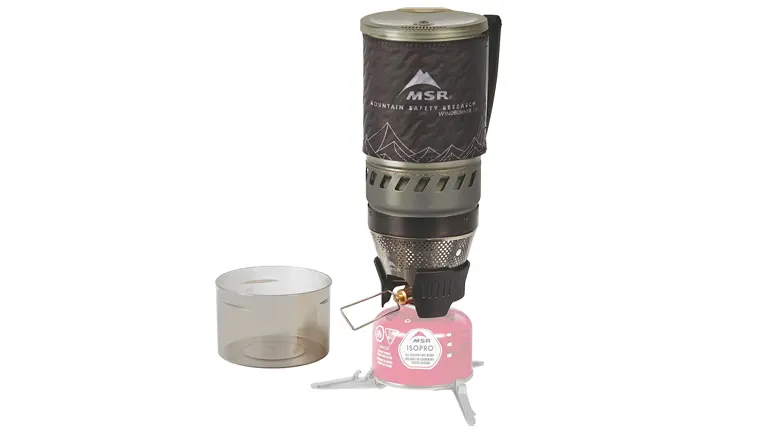
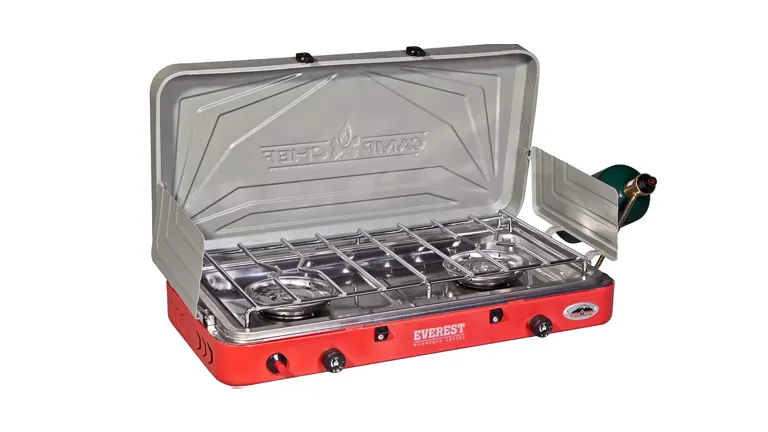

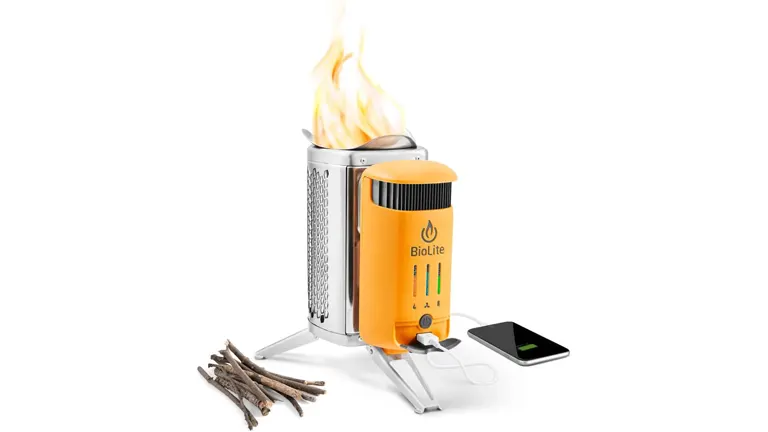
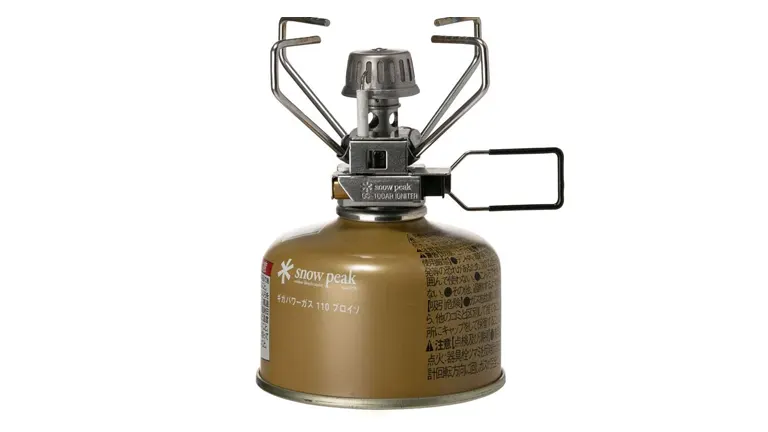
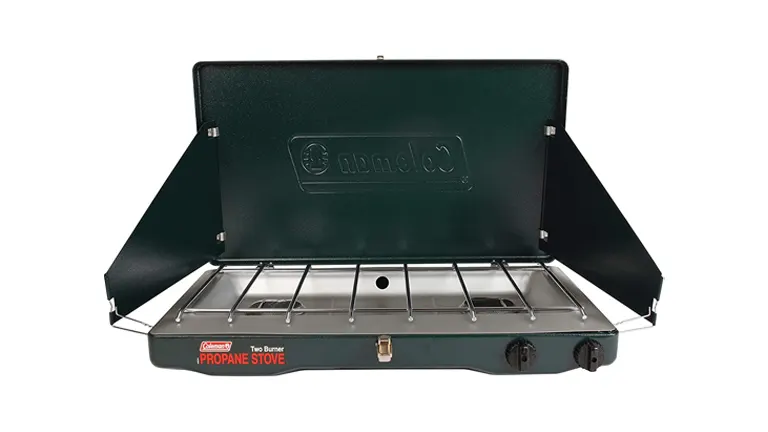
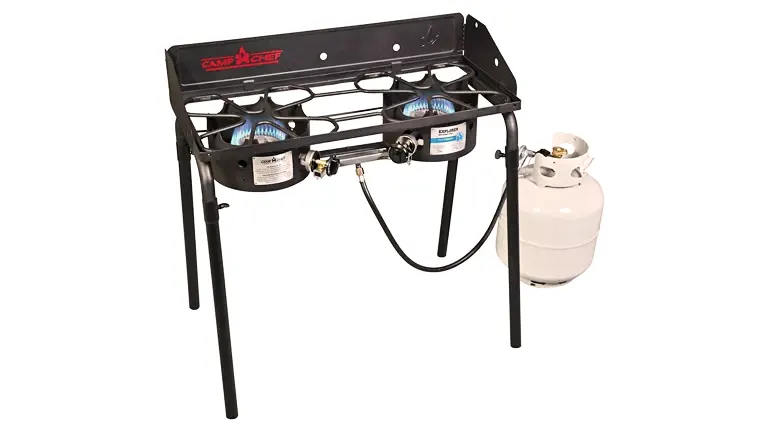
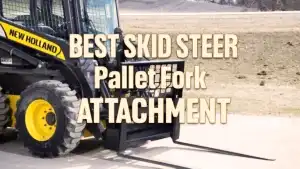

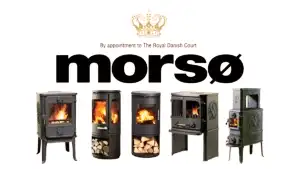



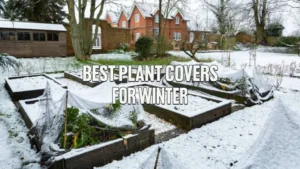
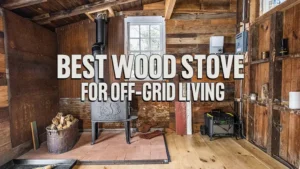
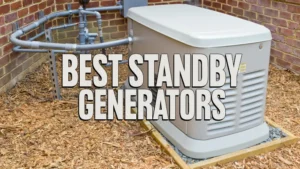



Leave your comment